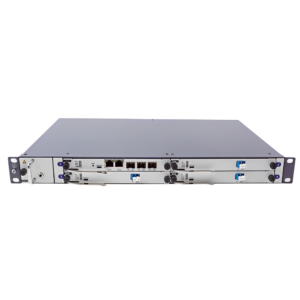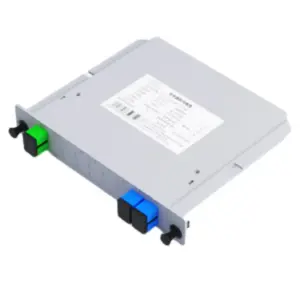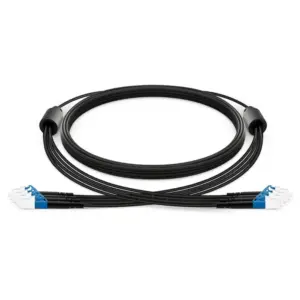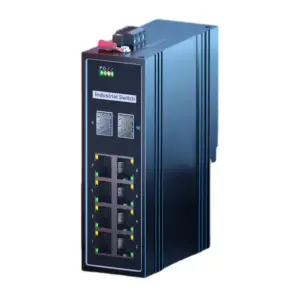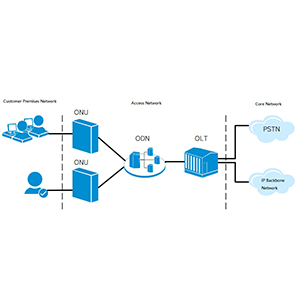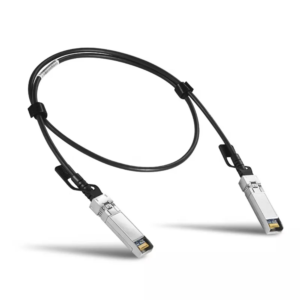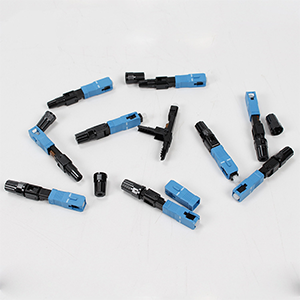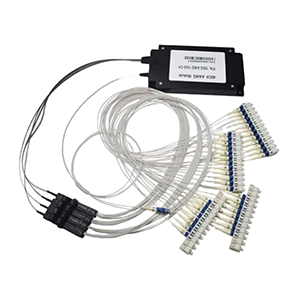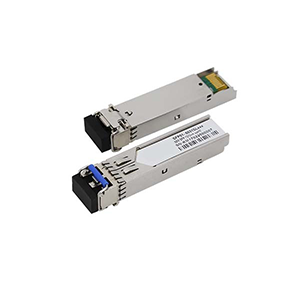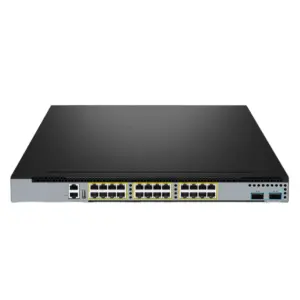As someone who is interested in optical communication and network transmission technology, I am very excited to introduce you to the SFP-10G-LR optical module. The SFP-10G-LR optical module is a long-distance single-mode optical fiber transmission module for 10G Ethernet with high performance and reliability. In this article, I will introduce you to its working principle, characteristics and advantages, as well as its wide application in optical communication networks and data center networks.
Introduction to SFP-10G-LR optical module
Definition and rationale:
The SFP-10G-LR optical module is a long-distance single-mode optical fiber transmission module for 10G Ethernet. It is a small pluggable optical module, which is packaged in SFP (Small Form-factor Pluggable) and is used for high-speed data transmission between network devices (such as switches, routers and servers). “LR” stands for “Long Reach”, indicating that it is suitable for long-distance transmission.
The SFP-10G-LR optical module uses single-mode fiber transmission and is suitable for applications with long transmission distances. It achieves high-speed, long-distance data transmission by converting electrical signals into optical signals and using optical fibers to transmit optical signals. The optical module contains an optical transmitter and an optical receiver. The optical transmitter converts electrical signals into optical signals for transmission, and the optical receiver receives optical signals and converts them back into electrical signals.
Standard specifications:
The SFP-10G-LR optical module complies with a series of standard specifications, the most important of which include the following:
-
SFF-8431: This is a specification issued by the SFF (Small Form Factor) Committee, which defines the requirements for the mechanical size, electrical interface and optical characteristics of SFP optical modules. The SFP-10G-LR optical module adopts the dimensions and interfaces defined by the SFF-8431 specification to ensure mechanical and electrical compatibility with compatible devices.
-
IEEE 802.3ae standard: This is a standard issued by IEEE (Institute of Electrical and Electronics Engineers), which defines the physical layer specifications of 10G Ethernet. The SFP-10G-LR optical module complies with IEEE 802.3ae standards to ensure its interoperability and performance requirements in 10G Ethernet environments.
In addition to the above standards, the SFP-10G-LR optical module also needs to meet other specifications and requirements, such as optical transmission performance indicators (such as transmission distance, optical power range and sensitivity, etc.) and electrical interface indicators (such as data rate and power requirements, etc.) . These specifications and requirements ensure the reliability, compatibility and performance of the SFP-10G-LR optical module.
Features and advantages of SFP-10G-LR optical module
Transmission distance and bandwidth:
The SFP-10G-LR optical module supports longer transmission distances and higher data rates, and has the following features and advantages:
-
Transmission distance: SFP-10G-LR optical module is suitable for long-distance transmission and can usually cover a maximum transmission distance of 10 kilometers. This makes it ideal for data transmission needs across longer distances, such as connecting devices over long distances in data centers, enterprise networks, or metropolitan area networks.
-
Data rate: The SFP-10G-LR optical module supports a maximum data rate of 10 Gbps (gigabit per second), which enables it to provide high-bandwidth data transmission. This is very useful for application scenarios that require large amounts of data transmission, such as high-performance computing, cloud computing, big data transmission, etc.
Single mode fiber:
The SFP-10G-LR optical module uses single-mode optical fiber for data transmission and has the following features and advantages:
-
Long-distance transmission: Single-mode fiber has a smaller fiber core diameter and can achieve lower signal propagation loss. This enables the SFP-10G-LR optical module to support longer transmission distances and is suitable for application scenarios that need to span large distances.
-
Low loss: Compared with multi-mode optical fiber, single-mode optical fiber has smaller loss during transmission. This means that the SFP-10G-LR optical module can achieve longer distance transmission while providing more stable and reliable signal transmission.
-
High bandwidth support: Single-mode optical fiber can support larger bandwidth, allowing the SFP-10G-LR optical module to provide high-speed data transmission. This is very important for application scenarios that require large bandwidth, such as high-definition video transmission, large-capacity data backup, etc.
It should be noted that since the SFP-10G-LR optical module uses single-mode optical fiber, you need to ensure that the selected optical fiber is compatible with the module and meets the corresponding specifications and requirements during deployment to ensure optimal transmission performance and reliability.
Application fields of SFP-10G-LR optical modules
Optical communication network:
SFP-10G-LR optical modules are widely used in optical communication networks, including the following aspects:
-
Fiber optic backbone network: SFP-10G-LR optical module can be used to construct fiber optic backbone networks and is used to connect network equipment in different locations to achieve long-distance data transmission. It can carry high-speed data traffic in a metropolitan area network (WAN) or wide area network (WAN), connecting data centers, offices or computer rooms distributed in different geographical locations.
-
Long-distance data transmission: Since the SFP-10G-LR optical module supports longer transmission distances, it is often used in scenarios that require long-distance data transmission. For example, in telecom operators’ networks, SFP-10G-LR optical modules can connect network nodes between different cities to achieve high-speed data transmission and interconnection.
Data center network:
SFP-10G-LR optical modules have important applications in data center networks and are used to achieve high-speed connections and interconnection of network equipment, including the following aspects:
-
High-speed connections between servers: In large data centers, high-bandwidth, low-latency connections are required between servers. SFP-10G-LR optical modules can be used to connect different servers to achieve high-speed data transmission and support large-scale data processing and storage.
-
Interconnection of network equipment: Network equipment in the data center, such as switches, routers, and firewalls, need to be interconnected to achieve network flexibility and scalability. SFP-10G-LR optical modules can be used to connect these network devices, providing high bandwidth and reliable interconnection.
-
Data backup and storage: Data centers usually require large-capacity data backup and storage. The SFP-10G-LR optical module can be used to connect storage devices to achieve high-speed data transmission and ensure fast and reliable backup and storage operations.
Technical parameters and performance of SFP-10G-LR optical module
Transmit power and receive sensitivity:
The transmit power and receiving sensitivity of the SFP-10G-LR optical module are key technical parameters to ensure reliable optical fiber transmission and reception. The following are typical transmit power and receive sensitivity requirements:
-
Transmit power: The transmit power requirement of the SFP-10G-LR optical module is usually between -8 dBm and -1 dBm. Transmit power refers to the intensity of the optical signal sent by the module. It needs to be maintained within a certain range to ensure that the optical signal can be transmitted in the optical fiber and reach the target device.
-
Receiving sensitivity: The receiving sensitivity requirement of the SFP-10G-LR optical module is usually between -14 dBm and -1 dBm. Receiving sensitivity refers to the minimum input power at which the module can correctly receive and decode optical signals. Higher receiving sensitivity means that the module can receive weaker optical signals, thereby expanding the range and reliability of optical fiber transmission.
Wavelength and modulation method:
The SFP-10G-LR optical module uses specific optical wavelengths and modulation methods to achieve data transmission. The following are common wavelengths and modulation methods:
-
Wavelength: SFP-10G-LR optical module usually uses a wavelength of 1310 nanometers (nm) for data transmission. This wavelength has lower transmission loss in single-mode fiber and can support longer transmission distances.
-
Modulation method: SFP-10G-LR optical module usually uses non-return-to-zero modulation method, also called NRZ modulation. NRZ modulation is widely used in optical fiber transmission, which directly converts digital signals into high and low levels of optical signals to achieve data transmission and decoding.
These technical parameters and performance indicators ensure the stability, reliability and performance of the SFP-10G-LR optical module in optical fiber transmission. In practical applications, ensure that the transmit power and receiving sensitivity of the module are compatible with optical fibers and other optical modules, and comply with relevant optical fiber transmission standards and requirements to ensure the best transmission quality and performance.
Deployment and configuration of SFP-10G-LR optical module
Configuration requirements:
When deploying SFP-10G-LR optical modules, the following are some common configuration requirements:
-
Proper fiber optic connection: Make sure to use the appropriate type of fiber (usually single-mode fiber) for the connection and use the correct fiber optic connector. SFP-10G-LR optical modules usually use LC type fiber optic connectors.
-
Parameter setting: Make appropriate parameter settings according to the specific network environment and requirements. This may involve setting parameters such as transmit power, receiving sensitivity, and optical signal attenuation to ensure the stability and reliability of optical fiber transmission.
-
Configuration of network equipment: Network equipment (such as switches, routers, etc.) connected to the SFP-10G-LR optical module also needs to be configured accordingly. This includes identifying and configuring the correct interfaces, port speeds, protocols, etc. to ensure compatibility and proper operation with the optical module.
Compatibility considerations:
When considering the compatibility of SFP-10G-LR optical modules, you need to pay attention to the following aspects:
-
Optical module compatibility: Ensure the compatibility of the SFP-10G-LR optical module with other optical modules. This includes the type of optical module (such as SFP, SFP+, etc.) and the specification (such as IEEE 802.3ae) to ensure that they can interoperate correctly.
-
Equipment compatibility: Consider the compatibility of the SFP-10G-LR optical module and the connected equipment (such as switches, routers, etc.). This includes the device’s interface type, speed and protocol, etc. Make sure the device supports the 10G Ethernet interface and has the corresponding optical module slot to support the installation and use of the SFP-10G-LR optical module.
-
Fiber optic compatibility: Make sure the selected optical fiber is compatible with the SFP-10G-LR optical module. The SFP-10G-LR optical module usually uses single-mode optical fiber for connection, so it is necessary to select an optical fiber with matching fiber specifications and wavelength to ensure the best transmission performance.
When deploying SFP-10G-LR optical modules, it is recommended to refer to the specifications and user manuals of the optical modules and devices for detailed configuration requirements and compatibility information. In addition, consultation and communication with suppliers or vendors are also important steps to ensure compatibility.
Summarize:
The SFP-10G-LR optical module meets the high bandwidth needs of 10G Ethernet and the requirements for long-distance data transmission by supporting long-distance transmission and single-mode optical fiber technology. It is widely used in optical communication networks for optical fiber backbone networks and long-distance data transmission, and is also used in data center networks for high-speed connections between servers and interconnection of network devices.
When deploying and configuring, you need to consider the correctness of fiber connections and configuration parameter settings, and pay attention to compatibility with other optical modules and equipment. In the current market, SFP-10G-LR optical modules are driven by demands such as data center expansion and fiber optic backbone network construction. In the future, it is expected to develop new technologies such as higher data rates and longer transmission distances. We hope this article has provided you with valuable information about the SFP-10G-LR optical module and helped you better understand and apply this high-performance optical module solution.
- What is SFP-10G-LR?
- What is the difference between SFP-10G-LR-S and SFP-10G-LR?
- What is SFP optical module?
- What is 10G SFP module?
- What is SR and LR in SFP?
- What country is SFP-10G-LR from?
- What is Cisco SFP 10G LR S?
- What is the maximum distance for SFP 10G LR?
- Is SFP only for fiber?
-
1 Channel 40G to 100G SOA Amplifier
-
1 to 2 optical splitter
-
1-24 core industrial TPU fiber optic patch cord
-
10 port industrial ethernet switch
-
100g active optical cable
-
100G CFP DCO Coherent MR Optical Transceiver
-
100G CFP ER4 1310nm 40km Transceiver Module
-
100G CFP LR4 1310nm 10km Transceiver Module
-
100G CFP SR10 850nm 150m Transceiver Module


